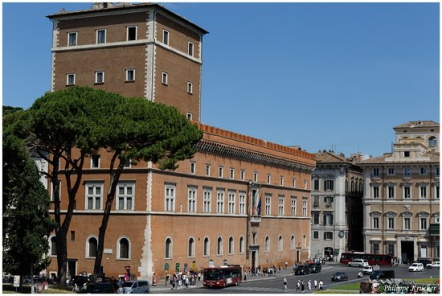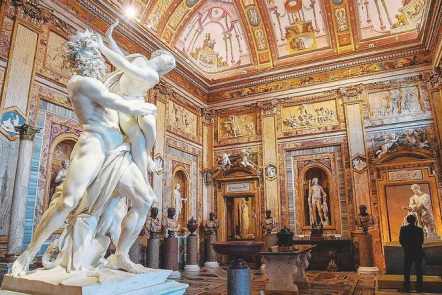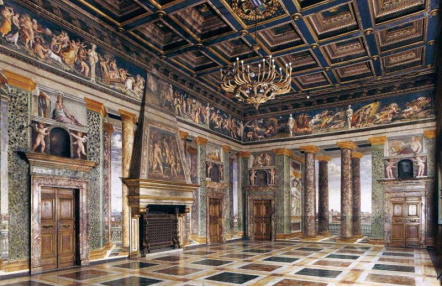Information
KOLBE HOTEL ROME
Via di San Teodoro, 48
Rome, Italy 00186
Phone: +39-06-679-8866
Description
In the Kolbe Hotel Rome, the Ancient and Modern blend to create a new form of hospitality.
The building's fascinating history paired with Rome's timeless beauty creates a breath taking atmosphere and an unforgettable experience.
Surrounded by the magnificence of ancient Rome, only a few steps from the Circus Maximus and the Imperial Roman Forum, the building is located in an evocative and prestigious area right in the heart of the city.
Amenities
Hotel Amenities
- Complimentary WiFi
- American Breakfast Included
- Unique Al Palatino Garden Restaurant
- Panoramic Terrace
- Internal Courtyard Garden
- “Smart Corner”: Internet and Work Station
- Luggage Storage
- 24-Hour Reception with Multilingual Staff
- Room Service
- Non-Smoking Rooms
Attractions
St. Peter’s Basilica

The Papal Basilica of St. Peter in the Vatican, or simply St. Peter's Basilica, is a church built in the Renaissance style located in Vatican City, the papal enclave which is within the city of Rome.
Pantheon

The Pantheon is a former Roman temple, now a church, in Rome, Italy, on the site of an earlier temple commissioned by Marcus Agrippa during the reign of Augustus (27 BC – 14 AD).
Colosseum

Although substantially ruined because of earthquakes, thieves, and stone-robbers, the Colosseum is still an iconic symbol of Imperial Rome and is listed as one of the New7Wonders of the World. It is one of Rome's most popular tourist attractions and also has links to the Roman Catholic Church, as each Good Friday the Pope leads a torchlit "Way of the Cross" procession that starts in the area around the Colosseum.
Museo nazionale del Palazzo di Venezia

The museum houses paintings by artists such as Carlo Maratta, Gian Lorenzo Bernini, Guido Reni, Pisanello, Benozzo Gozzoli, Beato Angelico, Giorgione, and Giotto, as well as sculptures, terracotta, gold and silver works, textiles, seals, medals, glass, tapestries, and enamels.
Palatine Hill

The Palatine Hill, which is the centermost of the Seven Hills of Rome, is one of the most ancient parts of the city and has been called "the first nucleus of the Roman Empire." It stands 40 meters above the Roman Forum, looking down upon it on one side, and upon the Circus Maximus on the other.
Trevi Fountain

The Trevi Fountain is a fountain in the Trevi district in Rome, Italy, designed by Italian architect Nicola Salvi and completed by Giuseppe Pannini and several others. Standing 26.3 meters high and 49.15 meters wide, it is the largest Baroque fountain in the city and one of the most famous fountains in the world.
St. Peter’s Square

St. Peter's Square is a large plaza located directly in front of St. Peter's Basilica in the Vatican City, the papal enclave inside Rome, directly west of the neighborhood of Borgo. Both the square and the basilica are named after Saint Peter, an apostle of Jesus considered by Catholics to be the first Pope.
Arts & Culture
Galleria Borghese

The Galleria Borghese is an art gallery in Rome, Italy, housed in the former Villa Borghese Pinciana. At the outset, the gallery building was integrated with its gardens, but nowadays the Villa Borghese gardens are considered a separate tourist attraction.
Palazzo Colonna

The Palazzo Colonna is a palatial block of buildings in central Rome, Italy, at the base of the Quirinal Hill, and adjacent to the church of Santi Apostoli. It is built in part over the ruins of an old Roman serapeum, and it has belonged to the prominent Colonna family for over twenty generations.
Sistine Chapel

The Sistine Chapel is a chapel in the Apostolic Palace, the official residence of the pope, in Vatican City. Originally known as the Cappella Magna, the chapel takes its name from Pope Sixtus IV, who restored it between 1477 and 1480.
Centrale Montemartini

Ancient sculpture museum, in a former power plant, with Greek & Roman statues, busts & friezes.
Villa Farnesina

Villa Farnesina, located in Rome (Trastevere), is considered one of the noblest and most harmonious creations of Italian Renaissance. At the beginning of the sixteenth century, it was commissioned by the Sienese banker Agostino Chigi to the architect Baldassarre Peruzzi. The interior is decorated with frescoes by Raphael Sanzio, Sebastiano del Piombo, Giovanni da Udine, Giovanni Bazzi known as il Sodoma, Giulio Romano, Giovan Francesco Penni, and Baldassarre Peruzzi himself. At the end of the sixteenth century the Villa was purchased by Cardinal Alessandro Farnese from whom it takes its name “Farnesina” to distinguish it from Palazzo Farnese on the other side of the Tiber. The Villa is also used for official representative purposes by the Accademia Nazionale dei Lincei.
Museo Leonardo Da Vinci Experience

The exhibition is one of its kind in the world, with a collection of 50 previously unseen machines, which are finally allowed to touch and try and certified reproductions of the 23 most famous paintings of the Tuscan Genius. From The Last Supper to Mona Lisa, the recognised masterpieces have been reproduced full scale according to the typical procedures of the Renaissance workshops and using the same materials (of 500 years ago!) Leonardo used.
Museo Nazionale Romano

The National Roman Museum is a museum, with several branches in separate buildings throughout the city of Rome, Italy. It shows exhibits from the pre- and early history of Rome, with a focus on archaeological findings from the period of Ancient Rome.